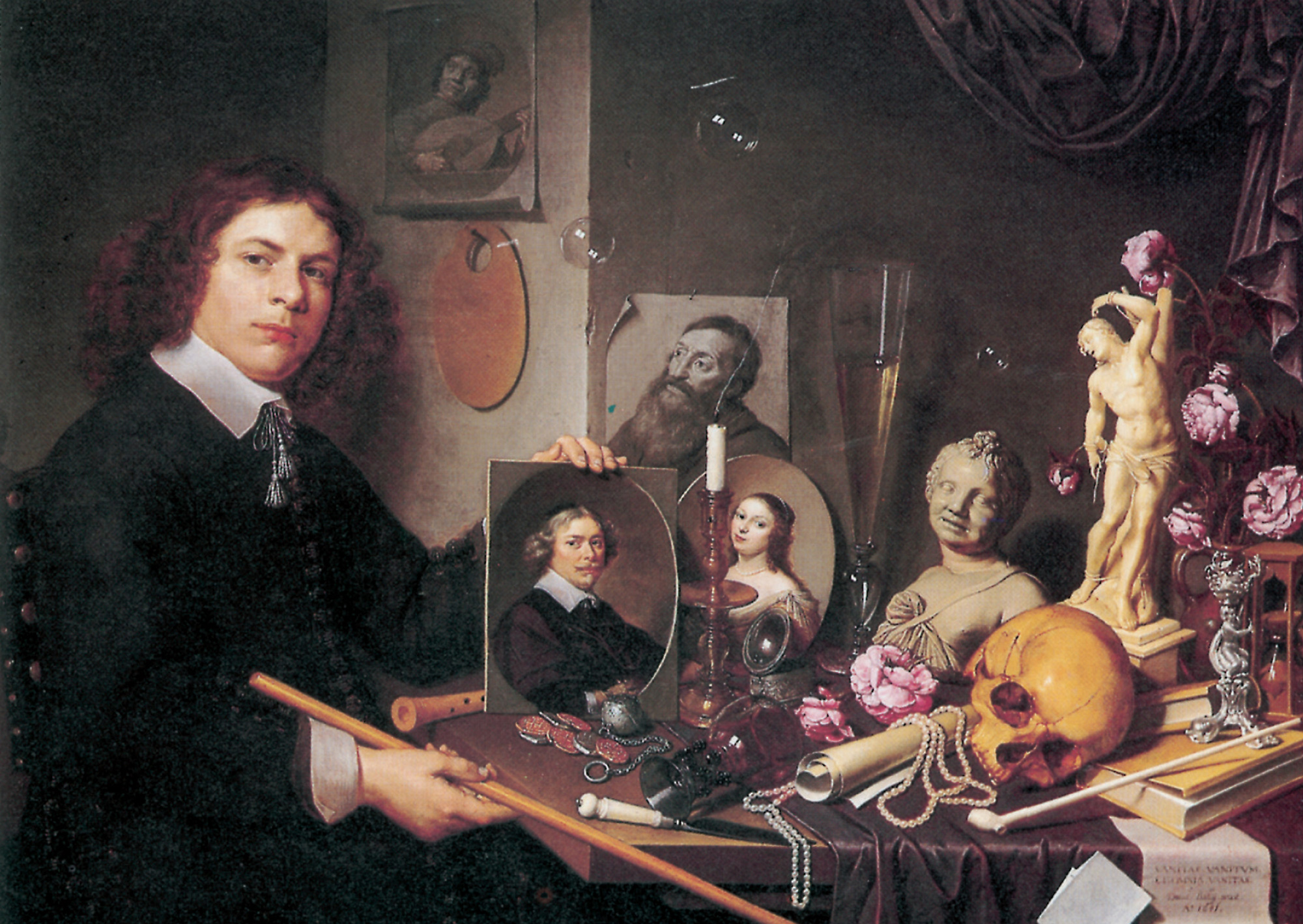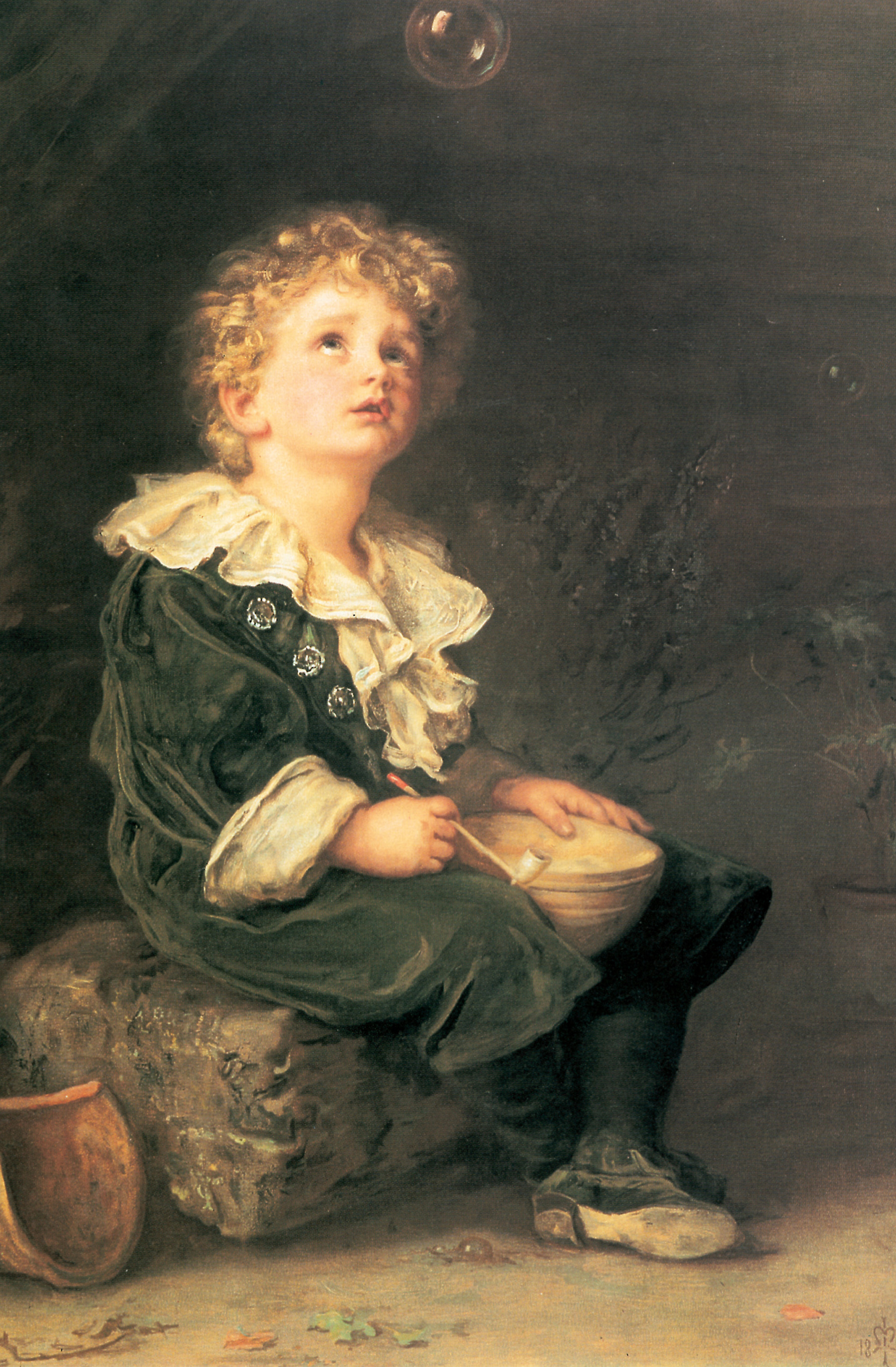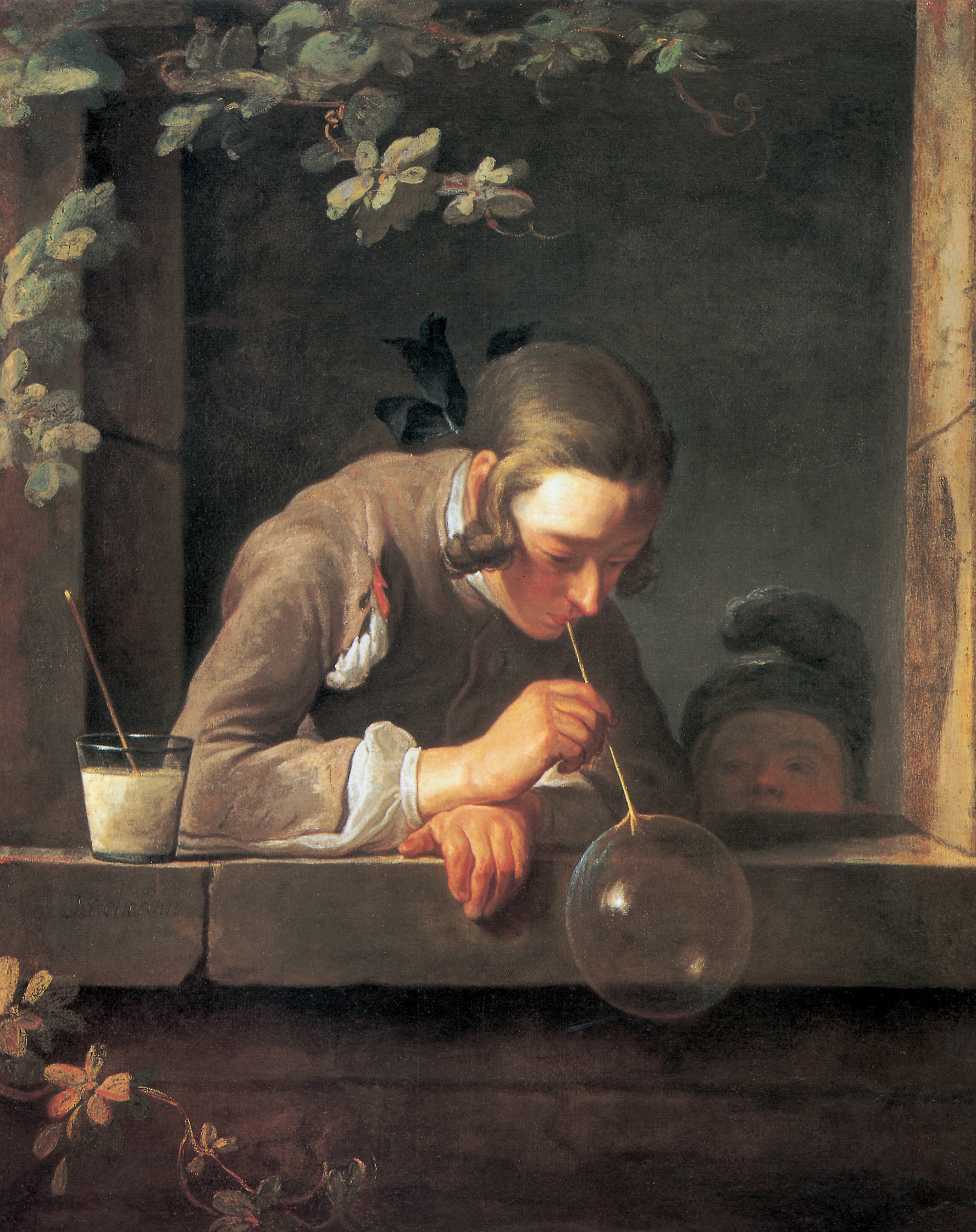Homo Bulla: An Interview with Sabine Mödersheim
The trouble with bubbles
Kris Coue and Sabine Mödersheim

The year 1789 was revolutionary in more ways than one. It was the year that Andrew Pears arrived in London to start manufacturing and selling soap through his shop on Gerrard Street in the fashionable London suburb of Soho. But his soap was not only less abrasive on the skin: it also produced bubbles that lasted longer. Blowing bubbles had long been a childhood pastime but the longer lasting bubbles of Pears’ soap made bubble blowing more worthwhile. A century later, street peddlers and pitchmen were selling bubble-blowing kits as toys. At that time, the most common instrument used was a pipe.
The well-known modern instrument—a circle on a stick attached to the jar cap—was pioneered in the early 1940s by Chemtoy, a chemical company that manufactured cleaning supplies. Chemtoy was acquired by a larger company, Tootsietoys, who put the bubble making toys into full-scale retail distribution by the latter part of the same decade. Bubble solution is still one of the best selling toys in the world today.
Bubbles are made of very little, almost nothing, and it might seem that these evanescent, translucent nothings are not appropriate vessels for a range of heavy metaphysical meanings. But Sabine Mödersheim, professor in the German department at the University of Wisconsin, has been examining the very different meanings that bubbles have had in art and cultural history in the past three centuries. Kris Coue spoke to her by phone.
Kris Coue: How did you become in interested in the theme of bubbles?
Sabine Mödersheim: I was interested in how the playing child is depicted in emblem books and other items that have emblematic or allegorical content. My research stays in art history and cultural history, though. It ends with the Pears’ soap advertisement from the late nineteenth century, the first time an artwork depicting a child blowing bubbles was used in an advertisement.
When do children and their games enter art history?
Children were depicted in artworks from the fifteenth century on. It’s the Renaissance that pays attention to children for the first time. Children are depicted in earlier times but they are not shown as children; they are not shown playing. So the child as a theme comes very late in art history, mainly in the 15th, 16th and 17th centuries. And even then, it’s more as an allegory of life or one stage of life. For the early modern period, there is a very circular and static idea of history or the circle of life; childhood is a very defined moment in the order of the world, in the cycle of life.
For the early period as well the Middle Ages and the early modern period, the child is actually a small adult. The child would have been considered deficient in the qualities that define an adult or an adolescent. All the qualities are there but they’re still weak so their qualities and characteristics have not developed, although it would be inappropriate to use the word develop because that’s a later concept that comes into pedagogy in the late eighteenth century through people like Rousseau and through reform pedagogy of the late eighteenth century.
What we find, especially in the late eighteenth century, is that people start thinking of childhood as a different, enviable stage of life where civilization has not yet regulated the person’s life: it’s carefree and innocent, and that plays into the depictions of children. We have a dramatic change in the fabric of the family at that time. Earlier, children were a part of the adult world. They would just be around and learn whatever they had to learn but they were part of that environment. What we see in the late eighteenth century, with the families becoming smaller and, most importantly, with the father’s occupation being separated from the house so that the workshop is no longer in the same place as the house, is that we have a separation between the lives of the women, mothers, and children and the fathers who provide for the family. That’s a radical shift that takes place in the eighteenth century in terms of how we see motherhood and childhood. Now children have to be schooled; they have to learn how to interact and they have to learn all the skills they used to learn by doing and watching.

Was playing in general considered in a negative light?
It was. It was seen as idleness and we don’t yet have the modern idea that children learn through play. Most children wouldn’t have had proper toys. They would find a stick or something. For example, in Dutch genre paintings, we see peasant and burgher children using things like pigs’ bladders, which they would fill with little peas and stones to make a rattle. The manufacturing of toys starts much later and proper toys are something that only the upper classes are able to afford. That is why soap bubbles were popular. They were available and cheap.
How do these shifts affect the way bubbles are represented in the various periods?
In sixteenth-century art and especially in Dutch seventeenth-century painting, bubbles are a moralizing emblem. The child is actually not at stake. The bubble blowing activity is what is important and the bubble is an allegory. It’s very telling and probably surprising for someone today to see how children and bubbles were initially connected to death. The emblem was used as an allegory of fleeting time and the shortness of life, and as a reminder of futility and death. This is the emblem of Man as a bubble, homo bulla, which stems from the Roman adage coined by Varro and Lucian and adapted by Erasmus for his famous collection of proverbs “Adagia,” published in 1572. The proverbial saying refers to the brevity of the individual human life compared to Creation, history, and eternal life in the eschatological sense. It is a very common motif and you find example after example on its own or as part of a larger vanitas still life.
The motif begins to show up all of a sudden but there are some prominent examples. Hendrik Goltzius’s engraving Quis Evadet (1594) is typical of the genre: It shows a putto, leaning on a skull, who is blowing bubbles—one of them already bursting—with a small pipe in his hand that is stretched out into the air, holding a shell with soap water in the other hand. Smoke is rising from an altar in the background, and the inscription Quis Evadet (“Who escapes?”) is on a stone that looks like a gravestone.
When are bubbles relieved of this heavy metaphysical burden?
The shift is clearly marked by the Chardin painting The Soap Bubble from 1739. It’s much more about personal melancholy, mourning one’s own childhood being gone rather than the general idea of vanitas and fleeting time. This is a melancholy that was not possible in the thirteenth century, say, because childhood was a stage of deficiency that had to be overcome as quickly as possible.
It was very common at that time to have a copperplate engraving made after a painting for larger distribution. The French copperplate of the Chardin has an inscription and a poem. The poem is far more conservative than what the picture allows. It’s not clear who chose the apparently anonymous poem but it tries to make sense of the painting in the old way as a symbol of futility. But the shift is already there. The painting depicts children at an age where they might start regretting that their childhood is over. That’s already built into this painting.

And is the Pears’ soap advertisement the culmination of this revaluation?
Yes. The ad used Bubbles, an 1886 painting by Sir John Everett Millais depicting his own grandson. The painting was never meant to be commercialized but it was bought for publication in a newspaper and then sold to the Pears’ Soap company. The company sought permission from the painter to use it in an ad. Some artist historians say it was the first time an artwork was used for a mass advertisement. There was a moral outcry on the part of other artists that Millais was selling out, blurring art and commerce, etc. It’s hard to say what Millais thought. He pretended at least that he didn’t want this to happen but he did give his permission. Pears’ also wanted to enter a soap bar into the painting so that there are two versions of the painting. I think they used the original as a model for a new painting. We still have the original without the soap bar.
How successful was the advertising campaign?
Immensely. It is a very clever combination of two motifs. You have the childhood motif and nostalgia; the little boy’s clothes are actually from the late eighteenth century. But it was not too melancholic. It’s one of the paintings where you see the shift to the depiction of childhood innocence. And the advertisement is still available today as a poster so its appeal has not worn off.
Sabine Mödersheim is assistant professor at the Department of German at the University of Wisconsin-Madison.
Kris Coue lives in New York City.
Spotted an error? Email us at corrections at cabinetmagazine dot org.
If you’ve enjoyed the free articles that we offer on our site, please consider subscribing to our nonprofit magazine. You get twelve online issues and unlimited access to all our archives.